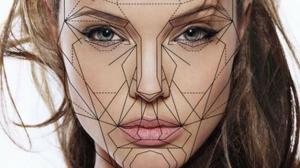11 curiosities about the brain
The brain is the set of organs that is at the base of thoughts and emotions; without it, the human mind simply would not exist.
Of course, despite the fact that everything we consciously experience we experience in the first person thanks to the brain, we know very little about this structure of the human body. Its complexity and the speed with which it does its work make it almost impossible to know in detail what is happening in it at all times. In part, this is why it is one of the most mysterious anatomical structures.
In this article we will see various curiosities about the brain that help us to get an idea of how surprising this point of union between psychology and biology can be.
- Related article: "Parts of the human brain (and functions)"
The most impressive curiosities about the brain
These are some of the reasons why neuroscience is a fascinating field of study.
1. There is a part of the brain dedicated to recognizing faces
Instant face recognition is one of the most defining characteristics of human beings, and it facilitates social relationships in a species as gregarious as ours. It is a skill that we enjoy thanks to
a patch of the cerebral cortex called the fusiform gyrus, which is also activated when we see face-like shapes in what is known as pareidolias.2. The brain could be the union of two nervous systems
There is a theory according to which the central nervous system is the product of the union of two nervous systems that developed separately over millions of years of biological evolution: one dedicated to capturing stimuli from the environment, and the other dedicated to moving parts of the organism. For example, it has been seen that in mollusks such as octopuses there are only a few points of connection between the brain and the neurons that activate the tentacles.
3. 60% of this is fat
As incredible as it may sound, most of the brain is primarily fat. Specific, most of the fat is accumulated in what is known as myelin sheaths, which cover a part of the neurons known as the axon so that the electrical impulse that these cells transmit goes faster.
- You may be interested: "Myelin: definition, functions and characteristics"
4. Never stops working
The brain literally never stops being activated. It does not stop being on even when we sleep or when we lose consciousness because of a stroke or illness. One of the curiosities of the brain is that its rhythm of work adapts to the needs of the moment, but the only time it stops doing it is when it dies.
5. Has no pain receptors
The brain is full of nerve fibers, but is insensitive to pain unless this "signal" comes from other parts of the body. This makes it possible, following certain procedures, to expose it in operations while the person is conscious; in these cases, it is possible to cut a little parts of the cerebral cortex, and the patient does not have to notice anything.
6. The number of neurons in the brain is incredible
There are about 80 billion neurons in the brain. In addition, different parts of it have a higher concentration of these. For example, him cerebellum It is known to host a high density of neurons.
7. It can adapt to the disappearance of one of its parts
The brain is a set of organs that has a great ability to adapt to injuries, taking into account the importance of the functions it performs. This means that in some cases certain people have lost practically half of their brain, and despite that they have survived. When something like this happens, the parts that are left healthy “learn” to perform a good part of the tasks that the parts that have died or have been removed did before.
8. The most numerous nerve cells are not neurons
There are two fundamental types of nerve cells: neurons and glial cells. The second are much more numerous than the first, being 85% of the brain.
9. We lose neural connections
When we are born, each of our neurons is, on average, more connected to its mates than when we are adults. That means over time there are interconnections that are lost, probably due to lack of use, keeping those that are most useful.
10. Each memory has two copies
Recent research has shown that, when memorizing something, this information is stored in two different places at the same time: the prefrontal cortex and a part of the brain known as the subiculum, below the hippocampus. In the first moments, the memory used is the one that is saved in the subiculum, but with the passage of time this "copy" disappears and the prefrontal cortex is used, which deals with long-term memory.
11. Brain injuries modify our personality
Certain injuries to the brain have been shown to shift from one personality type to another. For example, damage to some parts of the frontal lobe, lead to disinhibition and aggressiveness.

